If you’ve watched as many tournament streams as I have, you’ve probably come to develop a great appreciation for the people behind the casting desk. Regardless of the game - be it Magic: The Gathering, Street Fighter, poker, etc. - a caster’s job is to take complex, high-level play and distill it into a narrative that can be explained to an audience at home. That audience represents the full range of players in the community, from people who have never played the game before, to the best in the world. With regard to this narrative, the most essential question to answer at any given time is usually “Who’s winning?”
Most predecessors of Flesh and Blood have great tools to this end. Fighting games have life bars and super meters; Magic coverage has used an advantage meter; poker has a percent likelihood to win. To date, Flesh and Blood hasn’t developed an easy-to-interpret meter for the temperature of the match. Players can trade life points like haymakers, taking turns in the lead until someone falls over. A player can go to 1 life, fail to do a single point of damage in return, and yet remain in an advantaged position as they retain the ability to pressure. Situations like this make the job of narrating a game of Flesh and Blood challenging because it is unclear who is winning if things are remotely close. This is why “tempo” is such a popular term for describing game states. It represents a best-guess survey of all known variables, and groups them together into a feeling of who’s in the lead.
While this “who’s winning?” problem seems mostly for spectators, it also affects players. It’s hard to tell if a decision was correct if you can’t tell whether it moved you closer or further away from winning the game. This is why we’ve developed a concept of “value” that captures our damage dealt versus our damage prevented over a turn. This too has limitations however, because it struggles to capture our output in relation to our opponent. If we tabulate each player’s value output over an entire game, we’d get a very precise idea of who is winning, but this is not practical for players in the midst of a match, or spectators watching it.
But again, value is limited in what we can gain from it. It has very little explanatory power for answering whether to go first or second. We have a general understanding of when decks want to go first or second. Aggro decks want to go second to have the first attack that costs the opponent offense to defend; defensive decks tend to want to go first to set up an arsenal; no one wants Bravo going first and dominate a Spinal Crush. We have a gut feeling that these assessments are correct, but we lack the tools to prove it besides maybe aggregate win percentages.
This brings us to the thrust of what I want to discuss: a framework for assessing relative advantage between players. In other words, how can we tell who’s winning?
Card Advantage Doesn't Exist
In most traditional TCGs where players draw one card per turn (think Magic or Yu-Gi-Oh), cards are the primary economy which these games revolve around. Generally speaking, players are either trying to create situations where one of their cards extracts multiple cards from their opponent, draws them more cards, or usually some combination of the two. Life is the win condition, but a single threat can extract an infinite amount of damage from an opponent if it is supported by a controlling strategy fueled by having more cards. In other words, card advantage is king.
This is useful to us, but Flesh and Blood wrinkles things with its own unique economy. Since most threats in FAB don’t persist from round to round, they extract a flat amount of life or cards spent blocking. When attacked, we effectively decide whether we want to block now because our hand isn’t good enough (allowing us to pass on blocks at a later turn) or take damage now (forcing us to block later). Compared to other TCGs, life total and cards are very closely linked. If I’m losing 10-40 yet I somehow drew five more cards than my opponent, I’m still very far behind.
Because of this, life is an integral part of assessing who is winning. With this established, we can begin to assess advantage by integrating cards and life total.
Relative Advantage
At a competitive level, players are trying to get at least 3 points of value per card in a hand, whether it is spent attacking or defending (i.e. an average hand of 4 cards will represent a total value of 12). This is considered treading water while they establish plays that are higher value, but the way in which they will get ahead comes down to the unique strategy of the deck they are playing. Because of this, we can say that each card a player has access to is worth 3 points by default. If we add the base value score of our hand to our life, we get an approximation of our advantage in relation to our opponent. Whenever cards are spent for more or less than 3 points, that shifts the relative advantage.
Armed with this knowledge, we look at a board state. Both players are at 20 life with 4 cards in hand. Each player has a value score of 32 (20 life + 4 cards worth 3 each), meaning relative advantage is 0, so the game must be tied right? We don’t quite have the tools yet to say for certain, but we can compare this with what we know.
When life totals and available cards are even, we have a similar game state to the beginning of the game. We know that the player going first starts the game behind, even with a free arsenal. Factoring out the inherent advantage of attacking over defending, if the relative advantage is at 0 and one player is significantly ahead, something must be happening that we can explain.
Returning to our example, we are currently at parity in life and cards. Let’s say I run my entire hand at my opponent for 12 damage and they block with their entire hand for 12. Still at parity, as we both committed our entire hands. I end the turn and draw 4 cards - I am now 4 cards ahead of my opponent. My opponent passes their turn and draws 4 cards - back to parity. If we repeat this indefinitely, I am always 4 cards ahead of my opponent on their turn and they never get past parity. Since, after the first turn, players are never drawing cards at the same time, it’s impossible to have a game state where relative advantage stays at 0 over both turns. Instead, a tied game state would look more like a situation where players take turns being ahead by the same margin. In this case, the golden margin is 6 points, the equivalent of 2 cards.
New example. It's my turn and I’m behind 14 - 20 and we both have access to 4 cards. Since life totals are unequal, we have to move our metric from cards to value. My value score is 26 to my opponent’s 32 (14 + 3*4 and 20 + 3*4). My relative advantage is -6. I’m behind the equivalent of 2 cards.
Let’s say we make the same attack and block pattern as the prior example: all 4 of my cards for all 4 of theirs . After drawing during my End Phase, I now have 4 cards at the start of my opponent’s turn to their 0. Now our value scores are 26 - 20. Now my relative advantage is +6.
Any combination of attacking and blocking with these 12 point hands will leave both players permanently trading 6 point value leads. From this, we can conclude that a player is winning if they start their turn with a relative advantage greater than -6, or +6 at the start of their opponent's turn. Since attacking usually trumps defending, the actual line may change depending on the matchup and the number of cards they get to attack with, but in practice it doesn’t matter: if a deck is better on offense, the outcome will be reflected in the change in advantage next turn.
Let’s review. In order to assess who’s in the lead at the start of a turn, we can follow these steps:
- For each player we multiply the total cards in hand and arsenal by 3 and add that to life total to find a value score
- We subtract our opponent’s value score from our own to find our relative advantage
- We compare our relative advantage to parity. Parity is the midpoint where the game is about even. If our relative advantage is -6 on our turn, or +6 on our opponents turn, we are at parity. If our relative advantage is higher than parity, we’re winning by the difference.
Applications to a Real Matchup
Now that we have established a foundation, let's see how it holds up to a complex example. Let’s look at SCG’s coverage of Pro Tour Baltimore: Foulkes on Lexi vs Karamanis on Oldhim. If you follow the link at the stamped time, we have a scrappy turn cycle to work through.
Karamanis starts his turn behind on life (16 to 18) and behind on cards (3 to 4). In terms of value, the game is 25 for Karamanis to 30 for Foulkes (16 + 3*3 to 18 + 3*4) . Karamanis’ relative advantage is -5 on his turn, so we can say he’s 1 point ahead of parity (-6) and therefore he’s slightly in the lead. He uses his Tunic plus a blue pitch to play a red Debilitate. Foulkes blocks for 2, taking 6 and going to 12. Karamanis arsenals.
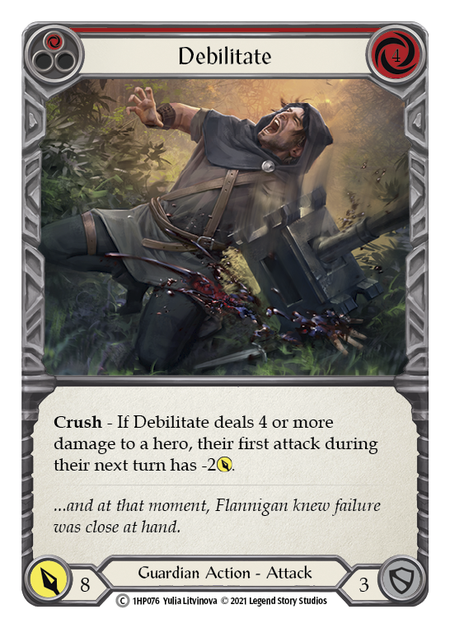
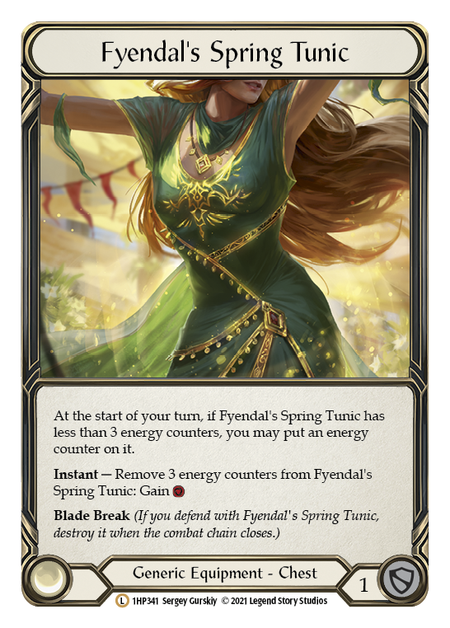
Foulkes starts his turn behind on life (12 to 16), and behind on cards (3 to 5). The value score is now 31 for Karamanis to 21 for Foulkes, meaning Karamanis' relative advantage is +10 on his opponent’s turn. He is now 4 points ahead of parity (+6), so that last turn gained him a full card of value. Foulkes loads and plays a red Fatigue Shot for 3 (lowered by last turn's Debilitate), which is blocked with one card. Foulkes then uses Codex of Frailty to return the Fatigue Shot and re-play it, which is blocked with a Sink Below plus Tunic. He draws a card off the Ponder token and arsenals it.
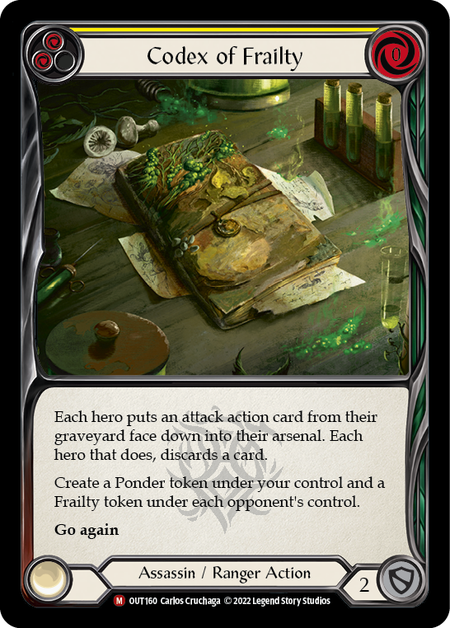
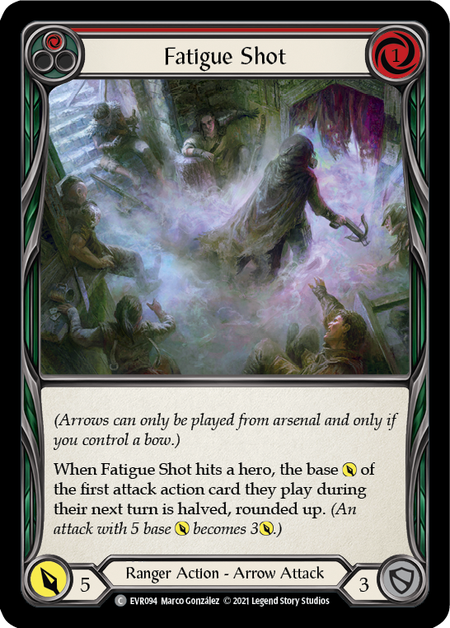
Karamanis starts his turn ahead on life (16 to 12) and behind on cards (3 to 5). The value score is 25 for Karamanis to 27 for Foulkes, meaning Karamanis’ relative advantage is -2 on his turn. Despite Foulkes playing Codex of Frailty, Karamanis is still 4 points ahead of parity.
Something weird happened here. Codex effectively draws 2 cards (retrieving one from the graveyard plus providing a Ponder token), which is 6 points at a minimum. How did Foulkes not pull ahead in such a close gamestate?
Well a lot of data slipped through the cracks. Karamanis used his Tunic resource but Foulkes didn’t. Karamanis used his Tunic to block, which eliminates that source of passive value generation which Foulkes still has. Foulkes also got crushed by Debilitate, lowering his damage output. What actually happened was that Foulkes fell even further behind than we were able to capture, and Codex offset those losses.
So our framework has some blind spots. Almost no game of FAB is determined without armor, items, hero abilities, threat density or other such intangibles. We have the equivalent of a classic engineering joke, a formula that only solves the simplest problems - also known as solving for spherical chickens in a vacuum. How do we account for this?
Some of these things, like equipment and items, we can simplify like we did for cards. Other things, like Dragons, we can only estimate. Threat density, which is essential for games that go to fatigue, we have to accept is incalculable. Getting into the minutiae of quantifying all these factors starts getting really wordy, so for now, let's accept that we only get ballpark values and see how we can use what we have.
First or Second?
Our framework is excellent for answering this question, because we can ignore equipment and threat density entirely. Let’s start with what we already know: if our opponent goes first and passes straight to arsenal, we start our turn with a value score of 52 to our opponent’s 55. Our relative advantage is -3 on our turn so we are 3 points ahead of parity. We start off ahead, then we get to compound that lead with offense, which is usually better value than defense. We can conclude that in most contexts, going second starts you off with a good lead.
With that out of the way, let’s explore how we can go first without falling behind, and more interestingly, why we’d want to go first at all.
If going first puts us behind 3 points, then the obvious answer is that we want to do something turn 1 that closes that gap. Playing Sigil of Solace to gain 3 life cleanly ties us - sure, we have to weather their offense next turn, but since we didn’t give them a chance to filter their hand by blocking, there’s a good chance they could stumble. In this case, stumbling means that their hand converted for less than 12 points (9 if they arsenal).

Does running Sigil of Solace mean we want to go first generally? Well, no - we have to assume that our opponent submitted a deck that doesn’t stumble more than half the time. If we have the choice between starting 3 points ahead - trusting that our deck doesn’t stumble the lead away - and sometimes starting at parity hoping our opponent stumbles, the choice is fairly clear. Plus we can still play Sigil going second and get even further ahead.
What about Bravo? Most players live in fear of a dominated Spinal Crush turn 1 and default going first to avoid that.


This example is more complicated than the last one, so let's get our pen and paper out. Bravo dominates a Spinal Crush and we can only block 3, taking 6 down to 34. Since Bravo forfeited an arsenal for this play (dominating a Spinal Crush turn 0 will always require 3 cards worth of pitch plus the Spinal itself), we start our turn with a value score of 46 - 52. Our relative advantage is -6 on our turn, so things don’t look too bad - except that the crush effect means all we can do is attack for 4, taking him down to 36. Then we arsenal. Start of Bravo’s turn, our value score is 49 to Bravo’s 48. Our relative advantage is +1 on Bravo’s turn, so now we’re 5 points behind parity. This means we fell almost two full cards behind due to that play. Sounds bad, but what if the roles were reversed?
Let’s say we go first to avoid that darker timeline. We pass and arsenal, so at the start of Bravo’s turn we know we’re 3 points behind parity. He dominates Spinal Crush - oh no! We block 3, taking 6 down to 34. Our value score at the start of our turn is 46 to Bravo’s 52, meaning we’re at parity. Again we point a measly 4 damage at him and arsenal. Again he starts his turn with us 5 points behind parity. Somehow things turned out exactly the same. It turns out that this is one of Bravo’s strengths - he’s fairly resilient to going first.
Does that mean he should be going first? Well, probably not. If Spinal Crush is the most disastrous thing he can do to us on his first turn, everything else he can do falls some degree short of that - and it doesn’t even matter whether he goes first or second. A dominated Chokeslam and an arsenal will leave him 2 points above parity regardless of whether he goes first or second (going second, he could make a Seismic Surge token instead of dominating to get further ahead). There are only a handful of cards in a conventional list that allow Bravo to get ahead going first, and anything less puts him either behind like everyone else, or ahead by a smaller margin than if he got to go second.
So even Bravo probably doesn’t want to go first! What does it take to want to go first? In short, it requires a deck that can consistently generate 6 points of value on the first turn in addition to arsenal. That would be like Dash getting to play a Teklo Pounder every single time she has to go first. But this isn’t completely true. Decks like fatigue Oldhim don’t really rely on value to win - they win by exhausting threat density, which we know is beyond the scope of this framework. Does this mean that going first is sufficiently better for their game plan than falling behind in value? I’m not an expert, so ask the next Oldhim player you see and take their word for it.
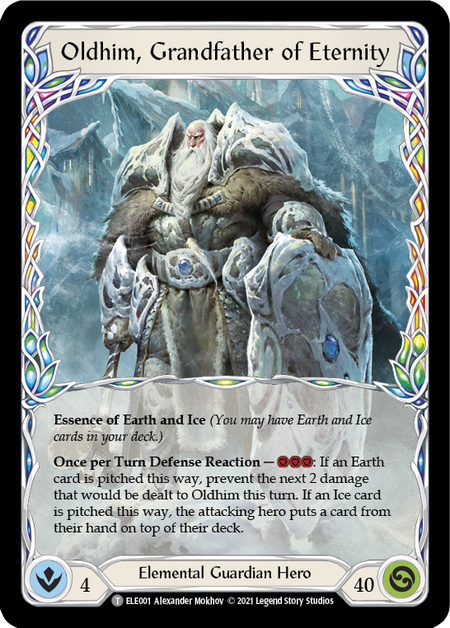
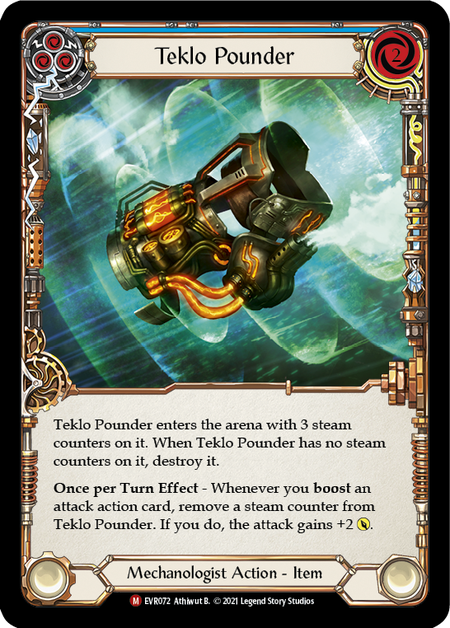
Wrap Up
What we went over here is the start of a new framework for assessing game state. Even in its simplest state, it’s quite a lot of information, and it still lacks precision. The next step is to figure out how to integrate other pieces of game state, which is a whole lot more information. My advice is this: try using this method as it is in your own assessments. Follow along with a stream or look at your own games, predict what you think the answer is, and work it out. Do the results line up the way you expected? If they didn’t, look to other factors the math might have missed, and use your own principles of value to account for what might be missing. In the meantime, I hope you are able to use this and find ways to improve your play and identify your big wins.





